Activities
Binh Thuan’s Industry: Seizing Opportunities to “Catch the Investment Wave”
Published
11 months agoon
Before entering 2025, Binh Thuan continues to attract two additional investment projects with a total capital of USD 88 million and over VND 100 billion registered for implementation in industrial parks (IPs). With its development orientation and favorable factors, experts suggest that the province should seize opportunities to effectively harness its potential and advantages, making industry a solid economic pillar.
Preparing Infrastructure
Although the investment registration certificates were issued at the end of the year, the investors of these projects expressed strong determination to proceed promptly, aiming for completion and operational readiness within just a few years. Notably, one of these projects is set to be implemented in the Tan Duc Industrial Park, where technical infrastructure construction only began in late May 2024. This decision not only reflects careful consideration in selecting an investment location but also demonstrates high expectations for the project’s success in Binh Thuan. The Tan Duc IP infrastructure development company is committed to adhering to timelines and swiftly handing over land to secondary investors.
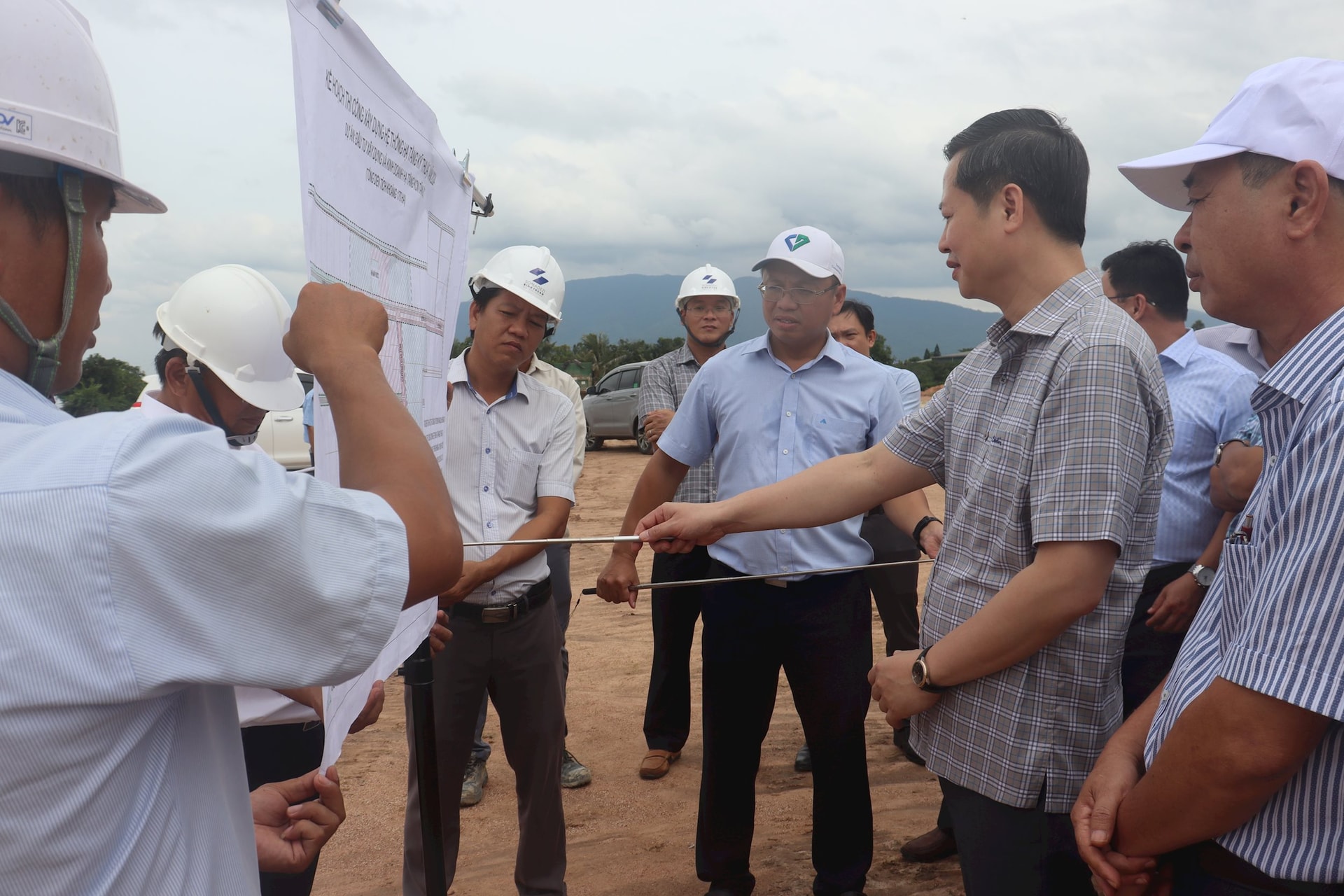
Recently, as bottlenecks in external traffic connections have been cleared, Binh Thuan’s position as the gateway linking the South-Central Coastal Region with the Southern Key Economic Zone and the Southern Central Highlands has become even more attractive. Therefore, southern Binh Thuan IPs are considered advantageous for attracting large-scale projects, contributing to the province’s economic and industrial growth.
Over the past months, visits by provincial leaders, including Party Secretary Nguyen Hoai Anh and Chairman of the People’s Committee Doan Anh Dung, to inspect the progress of IP infrastructure projects in the area have underscored the importance placed on industrial development. Alongside Tan Duc IP (300 ha), the Son My 1 Industrial Park (1,070 ha), which commenced construction in late August 2022, has attracted three major projects: Son My I Power Plant, Son My II Power Plant, and Son My LNG Port Terminal, with a total investment of approximately USD 5 billion. Additionally, the Son My 2 Industrial Park (Phase 1, spanning nearly 470 ha) is expected to break ground by Q2 2025 once land allocation is finalized. Provincial leaders have emphasized the importance of expediting investment progress to establish these IPs as quickly as possible, leveraging the southern region’s industrial development potential.
“Catching the Investment Wave”
To date, Binh Thuan’s IPs have attracted nearly 90 active secondary investment projects, including dozens of foreign investment projects primarily from Taiwan, Belize, Japan, Samoa, and China. Regarding domestic investments, Ho Chi Minh City investors alone have registered over 20 projects, with further growth anticipated in the near future. Consequently, the Ho Chi Minh City Export Processing and Industrial Zone Authority has suggested that Binh Thuan allocate land to accommodate businesses relocating as part of the city’s development strategy for export processing zones and IPs.
Recently, Binh Thuan and Ninh Thuan proposed collaboration in areas with shared potential and strengths, such as renewable energy, marine economic infrastructure, and industrial port development. These partnerships aim to create synergy and increase appeal to investors. With its development direction and favorable conditions, Binh Thuan promises to be an attractive destination for investors, focusing on three key sectors: industry, tourism, and modern agricultural technology. In the industrial sector, the province prioritizes clean energy, renewable energy, high-tech manufacturing, and processing industries organized into cluster-linked networks to drive economic restructuring toward industrialization and modernization.
As the New Year of the Wood Snake 2025 approaches, discussions about Binh Thuan’s growing investment appeal—bolstered by its deep-water port, highways, and upcoming airport and high-speed rail—are becoming increasingly vibrant. Adding to this optimism, at the Provincial Master Plan Announcement Ceremony for 2021-2030 with a vision to 2050 held last year, Chairman Doan Anh Dung affirmed that Binh Thuan is always open to investors, committed to supporting and facilitating successful and prosperous projects.
Currently, Binh Thuan has nine IPs with a total area of over 3,000 ha approved by the Prime Minister. Under the Provincial Master Plan for 2021-2030, with a vision to 2050, the province plans to expand by nearly 5,000 ha of potential IPs and establish a coastal economic zone in southern Binh Thuan spanning approximately 27,000 ha.
You may like
-
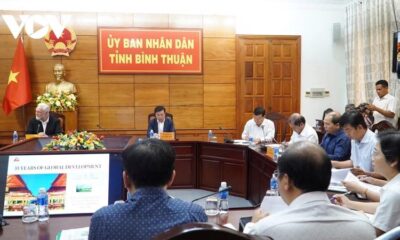

UAE’s PDSI Group proposes a golf course and service complex in Binh Thuan
-
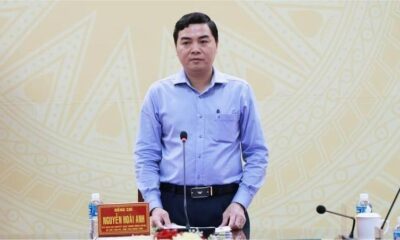

Central Vietnam province to clear sites for LNG projects in May, for operation in 2028
-


Pacifico Energy, EDF eye energy investments in Vietnam
-


Ninh Thuan province to complete site clearance for Vietnam’s first nuclear power plant in 2025
-


Nuclear power plans take off in bid to ensure energy
-
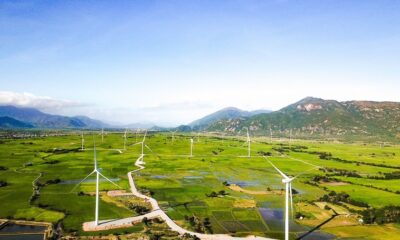

Norway renewable energy firm Scatec sells 39 MW Vietnam project for $40 mln
Activities
HoREA Proposes Allowing Businesses to Build Worker Housing Inside Industrial Parks
Published
9 months agoon
March 31, 2025The Ho Chi Minh City Real Estate Association (HoREA) has proposed a pilot mechanism that would allow businesses to invest in and construct worker housing within industrial parks.
In a document submitted to the Prime Minister, contributing feedback on a draft pilot policy aimed at boosting social housing development, HoREA suggested that businesses, cooperatives, and cooperative unions operating within industrial parks be permitted to build accommodation for their workers. It also called for allowing companies to rent housing outside industrial parks for the same purpose.
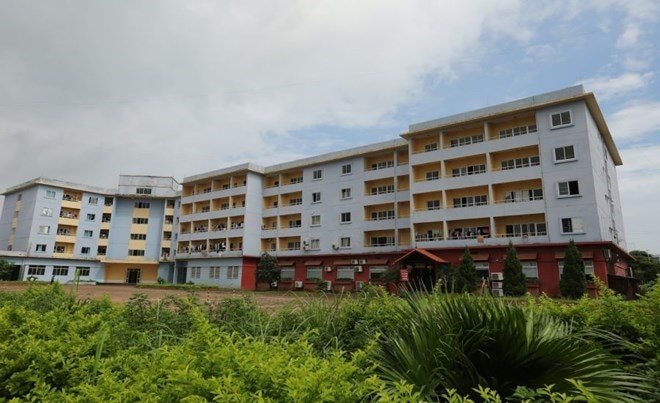
HoREA emphasized that all costs related to building or renting worker housing should be recognized as legitimate business expenses and be included in the enterprise’s operating costs.
The association further recommended expanding the policy framework to allow companies within industrial parks to lease social housing or worker accommodation built by third-party developers outside the park premises.
According to Mr. Lê Hoàng Châu, Chairman of HoREA, the current Housing Law (2023) only allows companies to rent worker housing inside industrial parks, without clearly defining whether they can rent social housing outside the parks or construct such housing themselves.
With worker housing demand at industrial parks far exceeding supply, HoREA pointed out that current social housing and dormitory offerings are inadequate. Meanwhile, commercial housing remains out of reach for most workers due to high prices. Therefore, the association urges the government to introduce policies enabling manufacturing businesses—despite not operating in real estate—to develop their own accommodation solutions for employees.
HoREA underscored that such policies would create a strong legal foundation, empowering enterprises and cooperatives to proactively resolve housing issues for workers. If allowed to construct their own housing, companies could ensure homes go to those in need, boosting employee retention, improving living standards, and supporting sustainable growth in industrial zones.
The association also proposed financial support mechanisms, including tax incentives, access to preferential loans, or government-matching support, to reduce the financial burden on companies participating in worker housing development.
Previously, many businesses had expressed a desire to buy land, build housing, and offer installment-based homeownership plans to workers, whereby employees would pay monthly through salary deductions. While this model helps workers secure long-term housing, legal procedures remain a major hurdle.
Providing accommodation has increasingly become part of corporate strategies to retain labor, alongside other employee welfare policies. For example, Nissei Electric Vietnam (Linh Trung 1 Export Processing Zone, Thu Duc City) has built a dormitory complex with 285 shared rooms, housing up to 2,280 workers. Eternal Prowess Vietnam (District 12) and Thien Phat Company (Linh Trung 2 EPZ) have also invested in on-site worker housing. Thien Phat’s project includes 368 units (35m² each), rented at VND 2.2 million/month, with 80% of the units for families and 20% for shared accommodations.
As of Q2 2024, Ho Chi Minh City has 18 industrial parks with around 1,700 businesses employing approximately 320,000 workers. Citywide, over 1.3 million people are employed in factories. However, there are only 16 official worker housing complexes, accommodating about 22,000 people. The majority of workers rely on rented rooms or stay with acquaintances—often sharing 12m² rooms among 2–3 people, which consumes 15–20% of their monthly income.
From 2021 to the present, Ho Chi Minh City has completed six social housing projects with 2,700 units and is building four more with 3,000 units. By April 30, the city aims to resolve legal hurdles and break ground on 5–6 additional social housing projects, totaling around 8,000 units.
Activities
Vietnam’s leading developer Becamex IDC targets $825 mln from ‘historic’ share offering
Published
10 months agoon
February 11, 2025Becamex IDC Corp, a leading eco-industrial and urban real estate developer in Vietnam, plans to raise nearly VND20.88 trillion ($825 million) from a public offering of 300 million shares on the Ho Chi Minh Stock Exchange (HoSE), equivalent to its current equity.
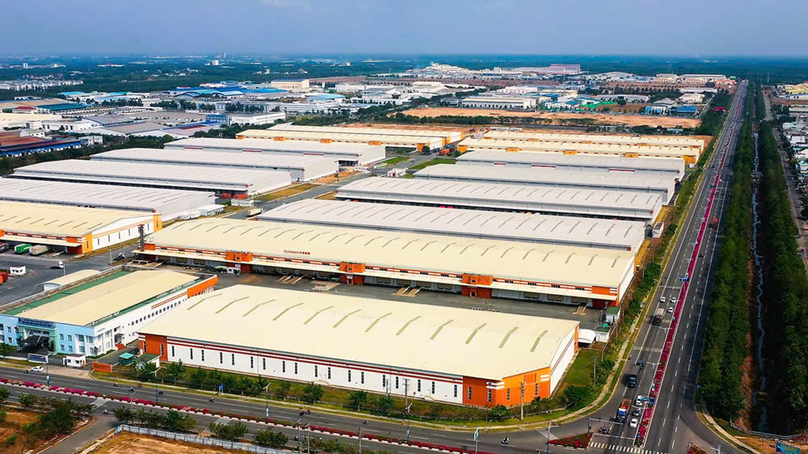
An industrial park developed by Becamex IDC. Photo courtesy of the company.
The corporation has approved the starting price of VND69,593 ($2.75) for the public auction of its BCM shares on the HoSE, aiming for VND20.88 trillion, nearly 40% higher than the initial expected value.
This offering is considered the largest since the state-owned capital divestment boom from 2016 to 2018.
The offering price is almost five times the book value of the stock at the consolidated financial statement for Q4/2024 and the average of the last 30 trading sessions prior to February 6, 2025 on the HoSE.
At the end of 2024, the company’s charter capital was VND10.35 trillion ($408.93 million), and equity was VND20.48 trillion ($809.2 million). If the capital raising is successful, its charter capital will increase to VND13.35 trillion, and equity will double to over VND41 trillion.
Becamex IDC, a giant in the industrial real estate sector in the southern province of Binh Duong, seeks to raise funds to invest in projects such as the Cay Truong Industrial Park and the expanded Bau Bang Industrial Park, as well as to contribute capital to existing companies, including Vietnam-Singapore Industrial Park J.V. Co. Ltd. (VSIP), Becamex Binh Phuoc Infrastructure Development JSC, Becamex VSIP Power Investment and Development JSC (BVP), Vietnam-Singapore Smart Energy Solutions JSC (VSSES), and Becamex Binh Dinh JSC. It also plans to restructure its finances.
Currently, the largest shareholder of the company is the People’s Committee of Binh Duong province, with a 95.44% stake. If the auction is successful, the state’s ownership will drop to 74%.
In the stock market, BCM moved counter to the VN-Index, steadily declining from VND87,000 ($3.44) per share at the end of 2022 to VND51,000 per share in April 2024. However, while the VN-Index stagnated, the ticker rebounded and closed at VND70,000 per share on Friday, up 37.2%.
The stock’s growth momentum slowed in the last quarter of the previous year due to a decline in business results. Specifically, in Q4/2024, Becamex IDC reported a sharp 60% decrease in revenue to VND2 trillion ($79 million).
Despite joint venture activities doubling profits to VND1.19 trillion, its after-tax profit still decreased by 33% to VND1.37 trillion ($54.13 million). For the whole year, its net revenue fell by 35% to VND5.2 trillion, and net profit dropped 12.5% to VND2.1 trillion.
Expansion ambition from 2024 to 2028
The corporation mainly operates in the fields of industrial park infrastructure investment, urban development, services, and trade. It is the developer of six industrial parks in Binh Duong province, covering a total land area of 2,931 hectares with an occupancy rate of 88%. The firm is also finalizing legal procedures to put the 700-hectare Cay Truong Industrial Park into operation in 2025.
In addition, Becamex IDC has expanded its reach to other localities outside Binh Duong, such as Binh Phuoc, Tay Ninh, Khanh Hoa, Quang Ngai, Thua Thien-Hue, Thanh Hoa, Nam Dinh, Ninh Binh and Hai Duong provinces, and Hai Phong city. The firm has also received in-principle approvals for four more industrial parks in Lang Son, Thai Binh, Binh Thuan, and Ha Tinh provinces.
Besides industrial parks, Becamex IDC has also developed urban and service areas such as the My Phuoc Residential Area, Thoi Hoa Residential Area, and Bau Bang Residential Area. The corporation plans to allocate resources for high-impact commercial projects like the WTC Exhibition Center, WTC Tower, and WTC Gateway cultural-central station complex in New Binh Duong town.
Moreover, the company, together with Singapore’s Sembcorp Industries, has developed the Vietnam-Singapore Industrial Park (VSIP) model, featuring an innovation center in an industrial-urban-service complex including a business incubator, advanced manufacturing center, and renewable energy research center.
These strategies will be implemented from 2024 to 2028, with a vision towards 2030. To achieve these goals, the company plans to increase its charter capital if necessary, borrow from credit institutions, and issue bonds.
Becamex IDC currently has total liabilities of VND38.3 trillion ($1.51 billion), with short-term debt of VND7.9 trillion and long-term debt of VND15.72 trillion. Its debt-to-equity ratio is 1.1 times.
Activities
Japan-invested solar cell maker Vietnam Sunergy to start $30 mln plant from June
Published
10 months agoon
February 11, 2025Japan-invested Vietnam Sunergy Wafer, a manufacturer of solar cells, plans to start official production at its $30 million factory in Hung Yen province from June.
The firm aims to complete administrative procedures in May and then install equipment in June, according to a recent project report. The plant covers 2.65 hectares in Minh Quang Industrial Park of the northern province.
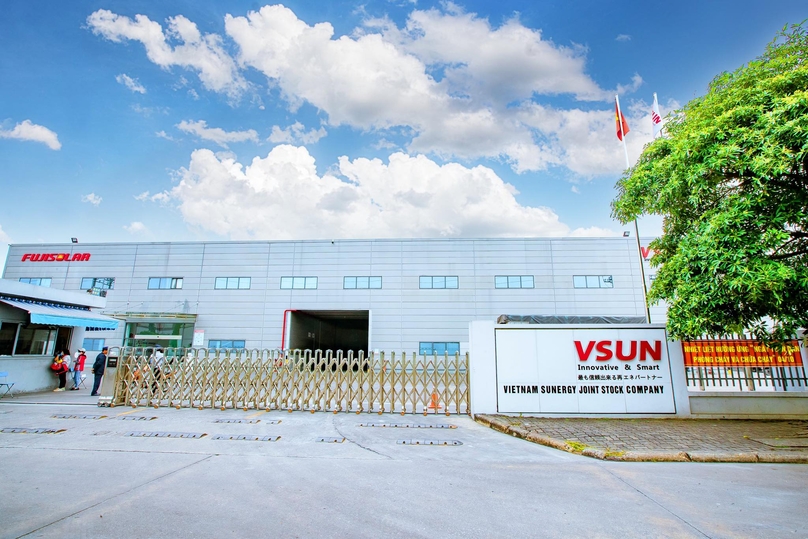
A factory of Vietnam Sunergy JSC. Photo courtesy of VSUN Solar Vietnam.
The project has an annual capacity of 600 million silicon wafers, a component of solar cells, equivalent to 9,375 tons. It is set to employ 1,000 people.
Hung Yen recorded registered foreign direct investment (FDI) of $1.5 billion in 71 projects in 2024, the highest-ever figure in terms of capital, according to provincial data.
The province, a neighbor of Hanoi, has so far attracted FDI of $8.5 billion. It now has 17 industrial parks in its masterplan, covering 4,395 hectares. Of these, 10 facilities are now operational.

Bac Giang International Logistics Centre launched

Vietnam’s Exclusive Economic Zone boasts over 1,000 GW of wind power potential: report

Uncertainty weighing on real estate

Central Vietnam city seeks $1.84 bln for 15 projects in economic zone

